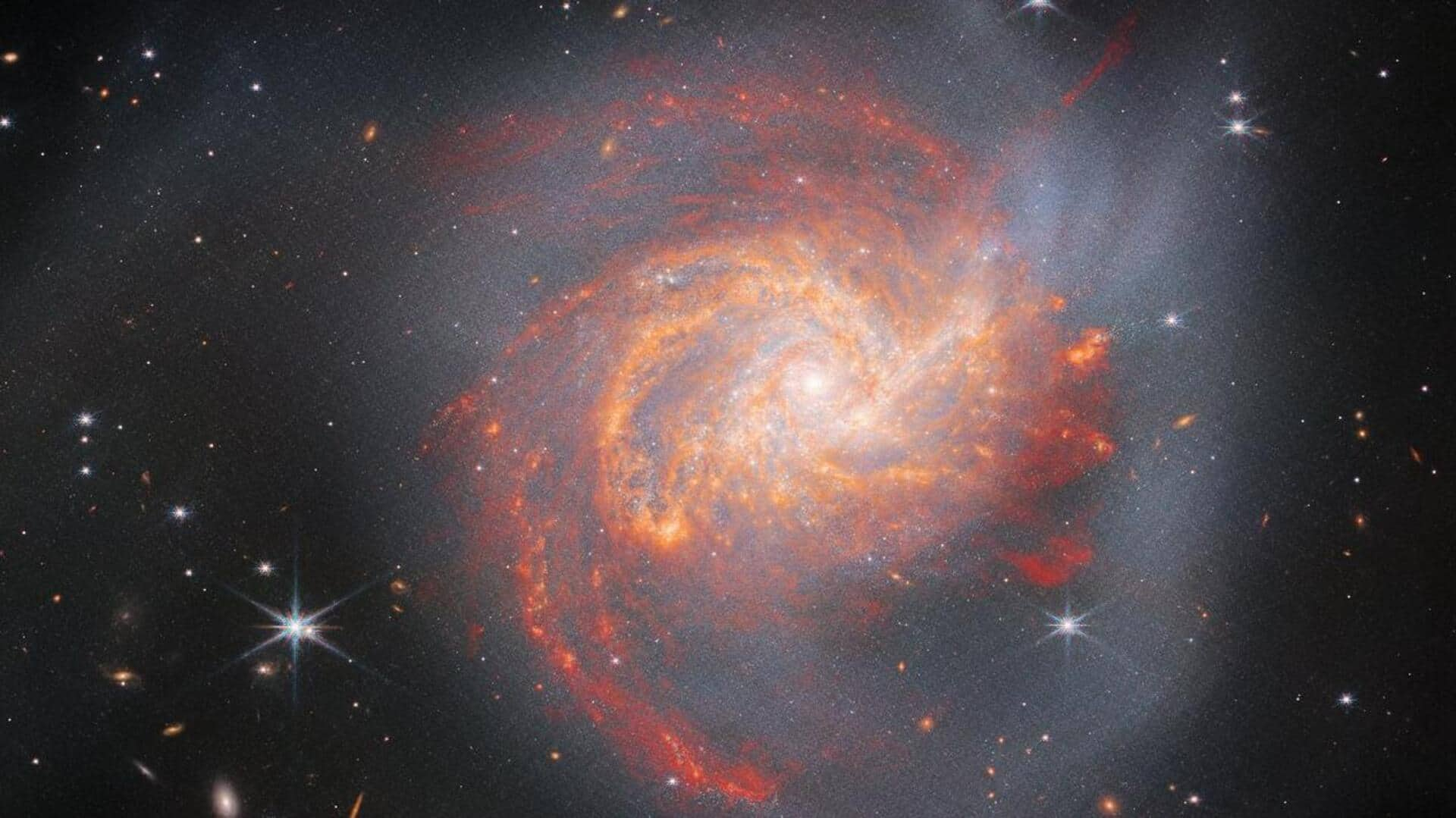
NASA's Webb photographs spectacular spiral galaxy born from 'cosmic clash'
What's the story
The latest image from NASA's James Webb Space Telescope (JWST) reveals an enormously bright spiral galaxy lying about 120 million light-years away in the constellation Vela. Despite its serene appearance, this distorted galaxy, dubbed NGC 3256, is actually the result of a "cosmic clash" that happened 500 million years ago. It is the aftermath of a head-on collision between two spiral galaxies.
Context
Why does this story matter?
The Webb telescope sees the universe in infrared wavelengths of light. The powerful space observatory complements discoveries made by the Hubble Space Telescope, as is the case with the recently captured spiral galaxy, NFC 3256. In this way, Webb offers more wavelength coverage to Hubble's findings and with greater sensitivity, ultimately provides more details of cosmic events.
Image
The reddish areas are home to star formation
The bright areas of orange and red strewn across the center and the majority of the NFC 3256 galaxy are home to several young stars that were birthed in the process of the chaotic collision of the galaxies. More stars, along with dust grains, are present in the spiral arms extending out from the central bright core of the galaxies.
Information
Smaller stars and galaxies are also seen in the image
While the spiral galaxy with its brightly glowing core takes up the center stage in the latest Webb image, there are smaller stars and galaxies that fill the dark background.
Details
NGC 3256 galaxy has been previously captured by Hubble telescope
NGC 3256 galaxy has been previously captured by Hubble. Now, by observing the same in infrared wavelengths, Webb provides more details about the galactic merger, especially of the star formation. "These infant stars shine most brightly at infrared wavelengths, light which can penetrate through obscuring dust in the galaxy, and which makes the stars perfect subjects for Webb," as per European Space Agency.
Implications
Webb can provide crucial insights into star-forming galaxies
Webb's latest findings are part of an investigation to better understand the processes involved in star formation and the evolution of black holes in nearby merging galaxies such as the NGC 3256. The space telescope, launched on December 25, 2021, was projected to operate for five to 10 years. However, per NASA's analysis, it will likely remain in service for more than 10 years.